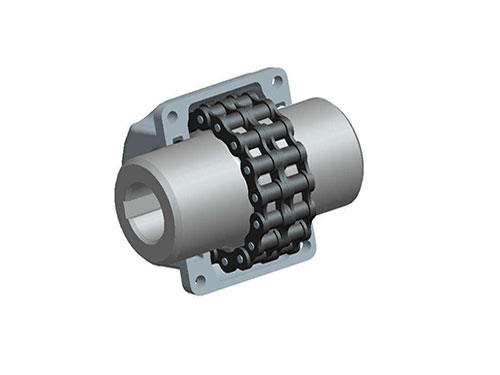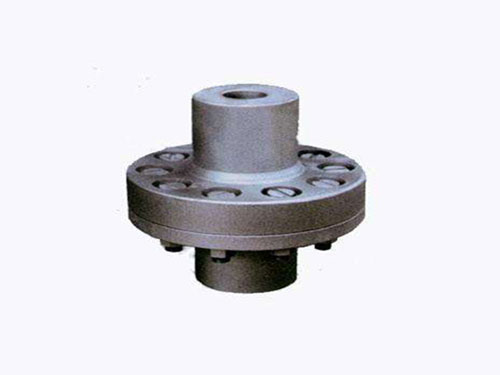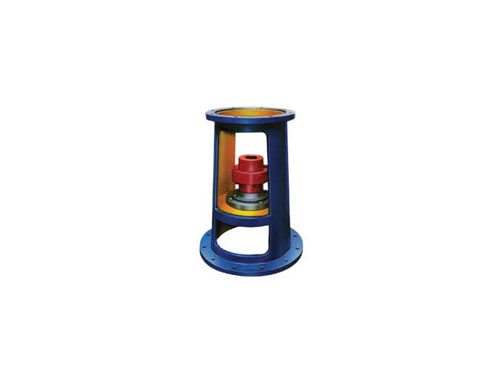 FCL type elastic sleeve pin couplingThe characteristics of FCL type elastic sleeve pin coupling...
FCL type elastic sleeve pin couplingThe characteristics of FCL type elastic sleeve pin coupling... GL type roller chain couplingGL-type roller chain coupling AUTOCAD renderings...
GL type roller chain couplingGL-type roller chain coupling AUTOCAD renderings... Elastic sleeve pin coupling for pumpElastic sleeve pin coupling for pump: 1. Elastic...
Elastic sleeve pin coupling for pumpElastic sleeve pin coupling for pump: 1. Elastic... Tire coupling for LLA metallurgical equipmentThe tire coupling for LLA metallurgical equipment is...
Tire coupling for LLA metallurgical equipmentThe tire coupling for LLA metallurgical equipment is... JXLD frame (74 standard)The JXLD type of this rack series is suitable for...
JXLD frame (74 standard)The JXLD type of this rack series is suitable for...The choice of coupling and the installation and use method of diaphragm elastic coupling
The coupling has a corresponding torque range. When the coupling is overloaded, it will automatically disconnect to protect the machine.Therefore, when choosing the coupling, the appropriate rated torque should be selected accordingly. Too small is not good, and too large is not good.The elastic coupling also has the function of buffering, damping and improving the dynamic performance of the shafting.The main functions of threaded couplings, slider couplings, and bellows couplings are as follows: connect the motor shaft with the mechanical shaft, and transfer the torque of the motor to the mechanical shaft for force transmission.In the manufacturing process of components, technical or objective factors will cause corresponding errors. The coupling can well compensate for radial, axial, and angular errors.However, according to various couplings, they have their emphasis on compensation ability. When choosing a coupling, you should choose according to your own situation.
XNUMX. Simple structure and convenient assembly and disassembly.
XNUMX. The whole machine has few parts, small size and light weight.
XNUMX. Large installation deviation is allowed.
XNUMX. Good vibration damping and long service life.
XNUMX. Large range of bearing variable load and stable starting.
Sixth, the transmission speed is good and running.
XNUMX. Low noise and good lubrication.
The coupling is connected by the driving shaft and the driven shaft. Generally, the power machine is connected with the working machine by means of the coupling, and it is a commonly used coupling part for the shaft transmission of mechanical products.General mechanical parts, the shaft of the machine is linked by it, so that the shaft can rotate naturally.If it is a high-speed machine, the coupling also needs to buffer, reduce pressure and improve the dynamic performance of the shafting.
The main structure of the serpentine spring coupling is composed of two half couplings, two half outer covers, two sealing rings and a serpentine spring sheet.It transfers torque by embedding the serpentine spring into the tooth grooves of the two coupling halves, and the coupling uses serpentine springs to be embedded in the tooth grooves of the two coupling halves to realize the link between the driving shaft and the driven shaft.During operation, the driven end is driven by the axial force of the active end tooth facing the snake spring to transmit torque, which largely avoids the occurrence of resonance and the elastic variable produced by the reed when transmitting torque. , So that the mechanical system can obtain a good damping effect, with an average damping rate of more than 36%.In mechanical transmission, power machines are nothing more than electric motors, internal combustion engines and steam turbines.Due to the different working principles and structures of the power machines, their mechanical properties are quite different. Some run smoothly, and some run with shocks, which have unequal effects on the transmission system.According to the mechanical characteristics of the power machine, the power machine is divided into four categories: electric motors and turbines, four-cylinder and more than four-cylinder internal combustion engines, two-cylinder internal combustion engines, and single-cylinder internal combustion engines.Snake-shaped spring couplings are often used in various industries such as smelting, steel rolling, and heavy machinery.Between the serpentine spring coupling power machine and the working machine, the main and driven ends are connected through one or several couplings of different varieties or different types and specifications to form a shafting transmission system.
The diaphragm-type elastic coupling uses a thin spring plate, which is connected with the two halves of the coupling by bolts or other coupling methods to realize the coupling of the elastic coupling of the two shafts.
Installation method:
1. Align the installation and control the reasonable deviation: Although the diaphragm-type diaphragm-type elastic coupling allows a large installation deviation, it should also be within the specified value during installation.
(1) Align the gap and angular deviation between the two-lobe couplings. When installing, measure the gap between the two-lobe Lingsi serpentine spring couplings every 90°, and the larger value and the smaller value are The difference does not exceed 0.38mm.
(2) Correction of radial deviation.Put a ruler on the two-part coupling, measure it every 90°, and check with a ruler, the radial deviation does not exceed 0.38mm.
2. Choose appropriate grease: The temperature of the oil injection point is ≥150℃, which can resist centrifugal force, has separation stability, no impurities, and does not corrode carbon steel and nitrile rubber.
3. Fill enough grease to change grease: Adequate grease is important for the work of the serpentine spring coupling, it is recommended to check once a year.Use a dry grease gun to inject grease until there is excess grease overflow in the hole.
Diaphragm elastic couplings are used in a variety of different host products, and the surrounding working environment is more complicated, such as temperature, humidity, water, steam, sand, alkali, salt water, radiation, etc., which need to be considered when choosing a coupling One of the important factors.